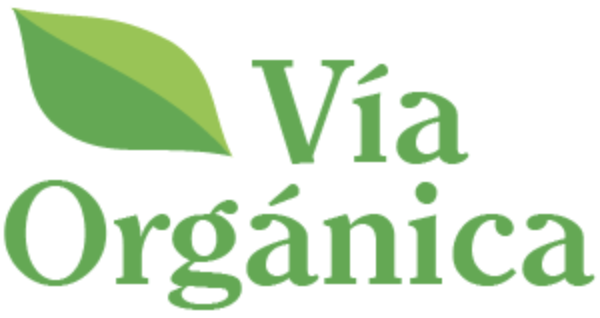Is This Factory Farming’s Tobacco Moment?
It is time for the federal government to stop promoting and subsidizing factory farms and junk food. Food Inc.’s “business as usual” practices are destroying public health and the environment, destabilizing the climate, and setting us up for disaster in the coming era of petroleum and water scarcity.
It is time for the Obama Administration and government regulators to place mandatory warnings on dozens of the most toxic foods, similar to the Surgeon General’s warnings on tobacco products. We also need warning labels on pesticides and chemical fertilizers, as well as a wide range of consumer products.
The following are proposed Surgeon General’s warnings for a few of the many (non-organic) crops we have analyzed, strawberries, peaches, and carrots:
DANGER! PROPOSED SURGEON GENERAL’S WARNING FOR STRAWBERRIES
Average Pesticide and Fertilizer Use on 2006 California Strawberries 9,274,453 pounds of pesticides used at an average of 279.44 lbs per acre on 33,190 acres. THIS IS THE HIGHEST AVERAGE PESTICIDE USE ON ANY FRUIT OR VEGETABLE! Two of top five pesticides are probable carcinogens. All five of the top chemicals cause multiple birth defects. Five pesticides account for more than 90% of use on California strawberries. Most used pesticide was Chloropicrin, or tear gas. Second most used pesticide was Methyl bromide, the ozone destroyer. 92.3% of berries tested had pesticide residues. 69.2% of berries tested had two or more residues. Of the 109 pesticides used on strawberries, 38 were detectable on berry samples. Some strawberry samples had as many as 8 residues. Strawberries were the SECOND most pesticide contaminated fruit in the EWG study Fertilizer use averaged 350 pounds of Nitrogen fertilizer per acre on coastal lands, which drain into the ocean. NITROGEN FERTILIZER IS THE MAIN CAUSE OF NITRATE WATER POLLUTION, DEAD ZONES IN THE OCEAN & GREENHOUSE GAS POLLUTION. PREGNANT WOMEN, CHILDREN AND THE ELDERLY ARE MOST AT RISK FROM THE USE OF THIS FRUIT! Sources: California EPA, DPR and CDFA, Environmental Working Group, U.S.EP
DANGER! PROPOSED SURGEON GENERAL’S WARNING FOR PEACHES
Average Pesticide and Fertilizer use on 2006 California Peaches
4,676,273 pounds of pesticides used at an average of 76 lbs. per acre on 61,377.95 acres. Two of top five pesticides are probable carcinogens, three cause birth defects, one is an endocrine disruptor, and three damage fish and other aquatic life. 96.6% of peaches had pesticide residues. 86.6% had two or more residues. 42 different pesticide residues were still detectable on the fruit. Some had as many as 9 residues on a single sample.Peaches had the highest percentage of fruit with dangerous residues of all fruit tested.
An average of 125 pounds of NITROGEN, 10 pounds of PHOSPHOROUS, and 200-500 pounds of POTASH fertilizer were used per acre-NITROGEN IS THE MAJOR CAUSE OF U.S. DRINKING WATER POLLUTION, DEAD ZONES IN THE OCEAN, AND A MAJOR SOURCE OF GREENHOUSE GAS POLLUTION.
PREGNANT WOMEN, CHILDREN AND THE ELDERLY ARE MOST AT RISK FROM THESE FRUITS! Sources: California EPA, DPR and CDFA, Environmental Working Group, U.S.EPA
DANGER! PROPOSED SURGEON GENERAL’S WARNING FOR CARROTS
Average Pesticide and Fertilizer use on 2006 California Carrots 6,616,796 pounds of pesticides were used at an Average of 102 lbs per acre on 64,870.55 acres. Most used pesticide was Metam sodium (Temik). Temik, Telone II, and Methyldithiocarbamate account for 90% of pesticides on carrots. All three cause birth defects, two are probable carcinogens. 81.7% of carrots had pesticide residues. 48.3% had two or more residues. 31 poisons were detected on the samples. 6 residues detected on a single sample. An average of 250 pounds of Nitrogen and more than 100 pounds of phosphorous and potash fertilizer were used per acre on carrots-NITROGEN IS THE MAJOR CAUSE OF U.S. DRINKING WATER POLLUTION, DEAD ZONES IN THE OCEAN, AND A MAJOR SOURCE OF GREENHOUSE GAS POLLUTION.
PREGNANT WOMEN, CHILDREN AND THE ELDERLY ARE MOST AT RISK FROM THIS VEGETABLE! Sources: California EPA, DPR and CDFA, Environmental Working Group, U.S.EPA
The proposed warnings above are not the kind of corporate-friendly regulations that will be tolerated by chemical companies such as Monsanto, Dow, Syngenta, Bayer, DuPont or BASF. Consumers will need to fight these corporations to gain their right-to-know what’s in our food and other products. But these are indeed the types of warning labels that are needed, similar to the warnings on tobacco products.
